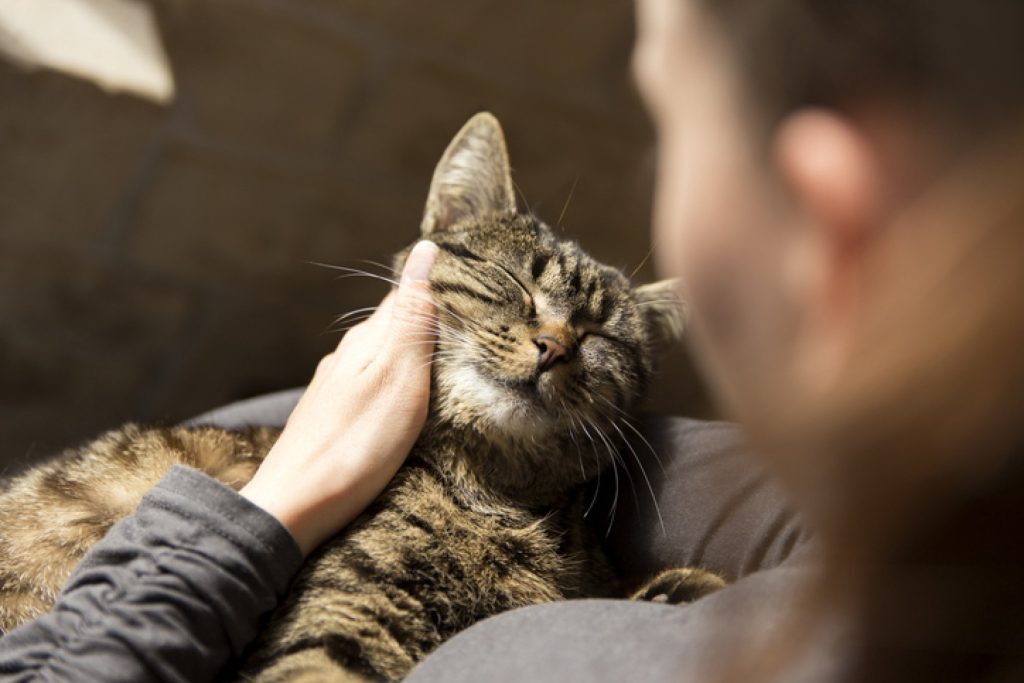Effective Strategies to Manage Cat Separation Anxiety Today

Understanding a Growing Concern
Pet owners often underestimate the emotional health of their cats, leading to issues like separation anxiety. This condition can cause significant distress for feline companions, resulting in behaviors that not only affect their well-being but also disrupt the household. With cats spending much of their time alone, recognizing the signs of anxiety and finding effective strategies to manage it is more important than ever.
Recognizing the Signs
Many cats may exhibit signs of separation anxiety, such as:
- Excessive meowing or vocalization
- Destructive behavior, like scratching furniture
- Withdrawal or hiding
Understanding these signs helps pet owners to intervene and seek solutions.
Why This Matters
Addressing separation anxiety not only improves the cat’s quality of life, but it also strengthens the bond between pet and owner. As pets become integral members of our families, their mental health should be a priority. In this article, we will explore the Top 5 effective strategies to help your feline friend cope with separation anxiety, providing resources and tips for implementation.
LEARN MORE: Click here for tips on introducing your puppy to the park

Top 5 Effective Strategies for Dealing with Separation Anxiety in Cats
Separation anxiety in cats is a growing concern among pet owners. It manifests as behavioral changes in cats when they sense their owner will be leaving, often resulting in stress not just for the feline, but also for their human companions. To maintain a peaceful home atmosphere, it’s crucial to understand and address this issue. Below, we delve into five impactful strategies designed to mitigate separation anxiety in cats, navigating from basic precautions to professional interventions.
5. Create a Safe Space
Establishing a safe and comfortable environment is the foundational step in managing separation anxiety in cats. Such a space serves as a sanctuary for your pet, offering them a sense of security and comfort in your absence. This area should be personalized to cater to your cat’s preferences, complete with beloved toys, cozy bedding, and accessible hiding spots where they can retreat to feel more secure.
When setting up a safe space, keep in mind the following:
- Opt for a quiet corner in the house, away from heavy foot traffic and noise.
- Incorporate items that bear your scent, such as worn clothing, to add an extra layer of comfort.
- Ensure the space is accessible throughout the day, allowing your cat to retreat to this haven whenever they feel stressed.
Creating this reassuring environment is not only about physical comfort but also nurturing a psychological comfort zone. This can greatly alleviate feelings of anxiety when your cat is left alone.
4. Gradual Desensitization
Gradual desensitization stands as a cornerstone in treating separation anxiety. This method requires dedicated time and patience as it involves slowly acclimatizing your cat to your absence. By modestly increasing the time you spend away, you reassure your cat that your departures are temporary, not a cause for panic.
Steps to implement gradual desensitization include:
- Begin by leaving your cat alone for a few minutes, gradually extending these absences as they become more comfortable.
- Provide positive reinforcement by offering treats or their favorite toys whenever you leave, creating a positive association.
- Monitor your cat’s reaction during these trial absences and adjust the pace according to their comfort level.
This approach is about consistent, gradual exposure, allowing your cat to adapt to the inevitability of your brief departures while building their tolerance and resilience.
3. Provide Enrichment Activities
Unlike their canine counterparts, cats are often self-entertaining. However, during periods of human absence, they can benefit immensely from enrichment activities. These activities are designed to engage a cat’s physical and mental faculties, turning potential anxiety into active engagement.
Consider the following enrichment ideas:
- Rotate toys every few days to prevent boredom and sustain interest. This can include feather wands, crinkle balls, or battery-operated mice.
- Introduce puzzle feeders to transform meal times into stimulating challenges, engaging their natural hunting instincts.
- Spend time on interactive play sessions before leaving to ensure your cat is not only entertained but also physically tired.
These activities do more than merely distract; they ensure your cat remains mentally challenged and less focused on your absence.
2. Use of Calming Tools
Not every cat responds to behavioral strategies alone. In some cases, calming tools can be a game-changer in reducing anxiety symptoms. These products leverage the power of natural or synthetic pheromones, closely mimicking those emitted by a mother cat to calm her kittens.
Here are some popular calming tools to consider:
- Calming sprays: Applied to your cat’s resting areas to promote long-lasting tranquility.
- Pheromone diffusers: These devices disperse calming pheromones into the air, which can have a profound calming effect.
- Calming music for pets: Soundtracks specifically engineered to alleviate stress in animals, promoting a serene ambiance.
These tools, when used effectively, create an environment that significantly lowers stress levels, making them invaluable allies in combating separation anxiety.
1. Professional Help and Behavioral Training
Sometimes, despite best efforts, a cat’s anxiety may prove too challenging to manage alone. In such cases, enlisting the services of a professional animal behaviorist or veterinarian is crucial. These professionals can evaluate your cat’s behavior comprehensively and provide specialized guidance tailored to their unique needs.
When seeking professional help, keep in mind the following:
- Research thoroughly to find reputable behaviorists with a proven track record in treating feline anxiety within your vicinity.
- Don’t hesitate to consult your veterinarian for recommendations, as they are often well-connected with specialists in animal behavior.
- Be prepared to explore a combination of behavioral therapy and, if necessary, medication. Professionals may suggest anxiolytics or other pharmaceuticals as part of a holistic management plan.
This final step represents a collaborative journey, involving close communication between you, your cat, and the professional. Through this process, specific triggers can be identified, and targeted, sustainable solutions can be developed.
In conclusion, managing separation anxiety in your cat isn’t a one-size-fits-all endeavor. It requires a combined effort, patience, understanding, and often creativity to find what works best for your feline friend. By establishing a safe space, utilizing desensitization techniques, offering mental enrichment, employing calming tools, and seeking professional guidance when needed, you can significantly enhance your cat’s emotional well-being, fostering a harmonious living environment for both of you.
| Category | Description |
|---|---|
| Behavioral Training | Implementing techniques such as desensitization and counter-conditioning can significantly reduce separation anxiety in cats. Training involves gradually increasing the duration of separations in a controlled manner. |
| Environmental Enrichment | Providing a stimulating environment with toys, scratching posts, and interaction with other pets can help alleviate stress and boredom, thus minimizing anxiety when left alone. |
| Calming Products | Using calming pheromones, anxiety wraps, or natural supplements can have a beneficial effect on a cat’s psychological well-being, making them feel more secure during separations. |
| Routine and Comfort | Establishing a predictable routine can provide a sense of security for cats. Additionally, having cozy spaces where they feel safe and protected during absences helps reduce feelings of anxiety. |
DISCOVER MORE: Click here to learn how to train your dog for outdoor adventures
Frequently Asked Questions About Separation Anxiety in Cats
What are the common signs of separation anxiety in cats?
Cats experiencing separation anxiety may exhibit a variety of behaviors that differ from their usual demeanor. Common signs include excessive vocalization such as meowing or crying, destructive behaviors like scratching furniture, urinating outside the litter box, and a lack of appetite. Additionally, some cats may become more clingy and follow their owners around the house, demonstrating distress when the owner is preparing to leave.
How can I help my cat become more independent?
Building your cat’s confidence while fostering independence involves gradual changes and positive reinforcement. Interactive toys that stimulate your cat’s hunting instincts can provide mental enrichment and occupy them during your absence. Also, training sessions using treats can strengthen your bond while promoting independence. Consider starting with short periods away, gradually increasing the time you are apart, allowing your cat to adjust smoothly to your absence.
Are there specific products that can help reduce anxiety in cats?
Indeed, several products are designed to assist with cat anxiety. Pheromone diffusers mimic natural calming scents and can help ease your cat’s stress. Calming collars and sprays are also available, offering continuous comfort through soothing scents. Additionally, some supplements, containing ingredients like L-theanine and tryptophan, are reported to have calming effects. Always consult your veterinarian before introducing new products to ensure they are suitable for your cat.
Should I consider professional help for my cat’s separation anxiety?
If your cat’s anxiety continues despite implementing various strategies, it may be time to seek professional help. A veterinarian can rule out any underlying health issues and may refer you to a certified animal behaviorist who specializes in cat behavior. Such experts can tailor behavior modification plans and provide specific training techniques to mitigate anxiety, ensuring your cat feels comfortable and secure even when you are not around.
DISCOVER MORE: Click here for expert tips on traveling with your feline friend
Conclusion
In navigating the nuanced world of feline behavior, addressing separation anxiety in cats emerges as a critical topic that demands vigilant attention and effective strategies. Throughout this article, we have explored various techniques aimed at alleviating this anxiety, from enriching the cat’s environment to providing them with interactive companionship.
One of the most salient insights is the importance of understanding the underlying triggers and signs of anxiety in each unique cat. By creating a stimulating and secure environment, guardians can help mitigate feelings of loneliness and stress. Interactive toys and puzzles, as well as vertical spaces, play a significant role in providing mental and physical stimulation that distracts and entertains. Additionally, the gradual training of independence emerges as a potent strategy to enable cats to handle alone time better.
Further emphasized is the role of consistent routines. Cats, known for their appreciation of predictability, benefit from a steady daily structure that reduces anxiety. This structure can be complemented by the use of comforting items and scents, like using pheromone diffusers that provide a calming environment.
The guidance provided throughout the article underscores the importance of informed intervention. Each cat is distinct, requiring a personalized approach that considers their specific needs and behaviors. As we have seen, understanding and patience are key allies in addressing separation anxiety effectively. Engaging in continuous observation and adjustment of strategies is crucial to achieving long-term success.
Ultimately, the well-being of pets is a top priority for their human companions. Addressing separation anxiety not only enhances the quality of life for our feline friends but also strengthens the bond between pet and owner. By applying these techniques thoughtfully, we can pave the way for a harmonious and balanced relationship with our cherished companions.


